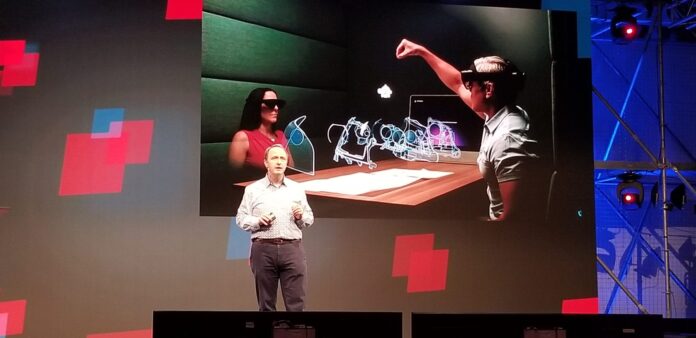Is Industry 4.0 really driving long-term change in how businesses operate? Sean Caragata, global industry director for industrial and critical infrastructure at Cisco, says yes, giving a number of case studies during a session at Hannover Messe 2022.
Caragata notes that manufacturing leaders and their tech partner have been working to implement Industry 4.0 over the past decade. Perhaps its biggest test thus far came in the first quarter of 2020, he added, ss cities and countries locked down in the first quarter of 2020 amid the first global wave of Covid-19. Manufacturers—when they could stay open—had to rapidly adopt to a new reality of remote work, remote monitoring and scaled-back production and site availability.
Those who had invested in Industry 4.0, he said, saw a “K-shaped recovery” and recovered faster from the initial economic slowdown than those who had not.
“We know that Industry 4.0 delivered on … business reliability objectives, in one of the harshest economoic emergencies we’ve experienced,” Caragata said.
He offered up a number of examples. Spanish snack food company Leng-d’Or serves global customers, 80% of whom are outside of Spain, Caragata said. Traditionally, the company sends its food researchers and scientists to its two manufacturing facilities in the United States several times a year to work on new recipes and formulas. The pandemic put a halt to this—but, he says, the company worked with Cisco on both using remote collaboration tools, plus sensors with real-time visibility into manufacturing production lines and equipment, and the company was still able to conduct research and development activities that included launching a new snack food production line during the pandemic. Even after travel restrictions lifted, he said, the company reduced its global travel by 30-40%, for a combination of both improved operations and sustainability.
McLaren Formula 1, meanwhile, has been working with Cisco’s Webex Hologram on implementing “immersive co-creation sessions” (pictured in the image above) for its design engineers, drivers and crews, but also is considering how to use similar technology to create fan experiences that will bring them together, virtually, with McLaren drivers and racing teams, according to Caragata.
He adds more examples: Flooring manufacturer Unilin Group, which has 21 factories around the world, is using its large production facility in Belgium as a blueprint for rolling out Industry 4.0 initiatives that standardize and automate provisioning and change management for all of its other production facilities. The use of Cisco Cyber Vision is providing end-to-end visibility across its connected industrial end-points, Caragata said, so that vulnerabilities can be identified and rolled into the company’s smart factory model. Meanwhile, in Japan, Yamazaki Mazak Corporation worked with Cisco not only to use Webex for internal meetings, but for customers to do virtual pre-delivery inspections of manufactured items, and to connect its factory in order to collect data from equipment on the plant floor in order to improve its operational efficiency and make data-driven decisions to improve its utilization and productivity rate.
Hybrid work, then, isn’t just about flexibility or a temporary fix in pandemic times, Caragata offers—it means new and practical benefits, for industries as diverse as manufacturing and Formula 1 racing.

